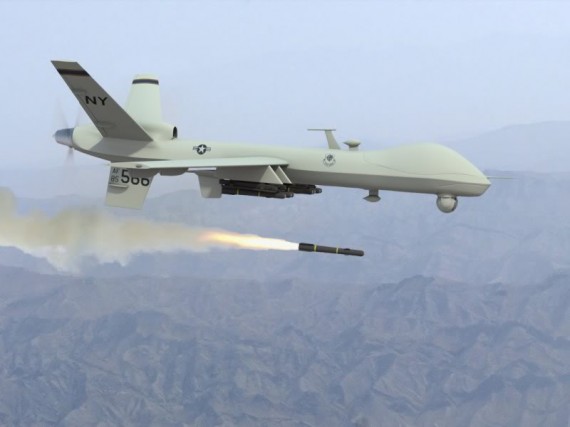As a theoretical matter, remotely piloted vehicles are simply a tool of warfare, morally indistinguishable from manned aircraft. The more efficiently the United States can target and kill its enemies, the better. And drones are cheaper to operate, carry far less risk for American military personnel, and make it easier to collect operational intelligence than their manned counterparts.
In reality, though, the United States uses drones quite differently than it uses traditional weapons. Because they’re small and cheap, they’re in constant operation in parts of Pakistan, Yemen, and Somalia. Because they’re in constant operation, they’re much more likely to be used to deliver lethal strikes. We’ve gone from a policy of firing only on high-value targets, such as senior terrorist leaders, thoroughly vetted by intelligence to one of engaging groups of young men who present the mere “signature” of militant groups.
Not only has this increased the percentage of noncombatants killed but, according to at least one major study, it has bred a climate of fear and resentment among the civilian populations in those societies that may well be creating more terrorists than we’re killing.
Most problematic, though, is the fact that drone policy is so shrouded in secrecy that it’s next to impossible to accurately assess the costs and benefits. Whereas most of the war on terrorism is being conducted by the regular military, which operates under a set of rules that have evolved over centuries and under intense scrutiny from Congress and the American public, the drone war is mostly the province of the intelligence and special operations communities, with only a relative handful of people privy to its details and most of them sworn to secrecy.
What we do know is from the combination of dogged reporting and selective (and quite probably self-serving) leaks. Back in May, the New York Times described the painstaking process President Obama and his national security team allegedly use to decide who goes on its kill list. We were told that the President personally ensured that each strike would “align . . . with American values.”
More recently, The Times reported that, in the weeks leading up to the November 6 election, the administration began “pushing to make the rules formal and resolve internal uncertainty and disagreement about exactly when lethal action is justified.”
Apparently, while they have strong confidence in their own ability to decide who needs killing, it occurred to them that it might be a good idea to have some structure in place in case a President Romney were in charge. As one official put it, “There was concern that the levers might no longer be in our hands.”
Indeed, Obama told comedian Jon Stewart that “One of the things we’ve got to do is put a legal architecture in place, and we need Congressional help in order to do that, to make sure that not only am I reined in but any president’s reined in terms of some of the decisions that we’re making.”
Of course, Obama easily won reelection; consequently, the enthusiasm within the Obama administration for defining and reining in presidential power is likely to wane. And given the acrimony on Capitol Hill, it’s hard to imagine that the President is eager to have congressional Republicans weigh in on something as sensitive as a kill list.
Then again, this seems to be one issue where there’s very little daylight between the two parties. Even the two separate fall 2011 drone strikes that killed Anwar al-Awlaki and his 16-year-old son, both American citizens, in Yemen raised few official eyebrows.
And because it’s all so incredibly classified, there’s not even an opportunity for informed public debate over the use of drones.
Perhaps the news that China has joined the ranks of the drone-possessing community, having unveiled an operational vehicle that looks suspiciously like the American Reaper but reportedly at a fraction of the per-unit cost, will finally force a major debate, much as Russia’s acquisition of nuclear weapons did in the last century.
It’s one thing for an American President to have the ability to control flying killing machines in disparate corners of the globe.
It’s quite another to put that power in the hands of an authoritarian regime in Beijing — much less those of any number of despots around the world who might be lining up as customers.
Joyner is the managing editor of the Atlantic Council. A version of this column was published in The New York Daily News.
Image: predator-drone-570x427.jpg

